Recent Storm Damage Posts
Get your Home Hibernation Ready
12/1/2019 (Permalink)
 Make sure you are ready for our cruel winters.
Make sure you are ready for our cruel winters.
The first snowfall may have already come (and hopefully gone) but it’s not too late to prepare your home for Winter.
Living in Alberta, or anywhere else for that matter, where the weather changes quickly, we know how cold and miserable it can get both inside and outside our homes. Preparing for winter while it’s happening is stressful and difficult – it’s a much better idea to be prepared in advance with these tips to get your home and family ready for the cold winter ahead.
Clean out your garage
Like your traditional spring cleaning, consider scheduling a traditional 'fall cleaning' of your garage. Organize the remains of your summer projects and clean and store gardening tools. Like a seasonal turning of your closet, push what you won't need any longer like your lawn-mower, hedge trimmer, rakes and summer toys to the back and bring any winter necessities like: shovels, snow blowers, skis and sleds to the front. Set out salt and gravel containers, and you'll thank yourself when the snow arrives.
Cut the water
Pipes can freeze and rupture in the coldest temperatures, and this can cause external and internal damage to the home. To prevent this problem, turn off the water to all external spigots and then drain the hoses. Homes with an exterior sprinkler system should also hire a professional to blow out your system so it can be closed down for the season.
Prepare your hearth Santa & Fires
Homes with a working chimney tend to rely on it heavily during the colder months, and this makes routine service during the fall essential. A clean chimney not only reduces the risk of a fire hazard, but it also eliminates harmful toxins from lingering in the air
Your furnace needs an annual checkup
Is your heating system ready to weather the winter? Have a professional check your heating system and ensure it's in good working order before you turn it on. Schedule checks for your furnace and venting system. Don't forget to replace the batteries in smoke and carbon monoxide detectors, in case any of your heating systems are overworking.
Pad your pipes
A small frozen pipe can cause big household damage if it bursts, so pad your pipes to prevent floods. Grab some tubular pipe insulation sleeves from your local hardware store and set to task covering exposed pipes in unheated areas, such as a basement, attic, crawl space or cabinet. The pipe sleeves are easy to apply and can be cut to fit. Cover all exposed parts, including bends and joints. Finally, seal the seams with duct tape. With that simple task, you're not only preventing considerable water damage, but also conserving energy.
Get your Calgary Home Ready for Winter
11/1/2019 (Permalink)
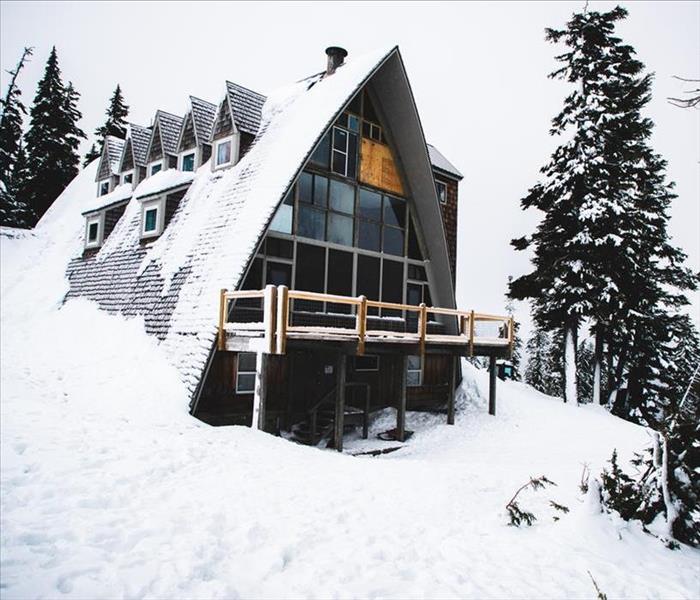 Proper home maintenance can help you and your house escape the winter unscathed
Proper home maintenance can help you and your house escape the winter unscathed
Keep Your Home Safe!
Since the severe weather has made an appearance across the country, it's only right if I give you Awesome Tips on keeping your home and business safe!
Tips for Preparing Your Home for Winter Weather
- Keep cabinet doors open during cold snaps. This allows warm air to circulate around pipes
- Keep a slow trickle of water flowing through faucets, especially if the pipes for faucets, especially if the pipes for faucets run through unheated or non-insulated areas of your home.
- Consider shutting off outdoor faucets. Find the shut-off valve in the basement or crawl space and turn it to "off".
- If you follow the previous step, then open the outdoor faucet to help ensure it drains completely and the inner valve is shut off.
- Ensure gutters are clean and secure. Leaves and debris accumulate, causing a damming effect on gutters, which could lead to roof problems and water damage.
Proper maintenance of your furnace can help reduce the risk of puff backs.
When Storms or Floods hit, SERVPRO of Calgary South is ready!
8/21/2019 (Permalink)
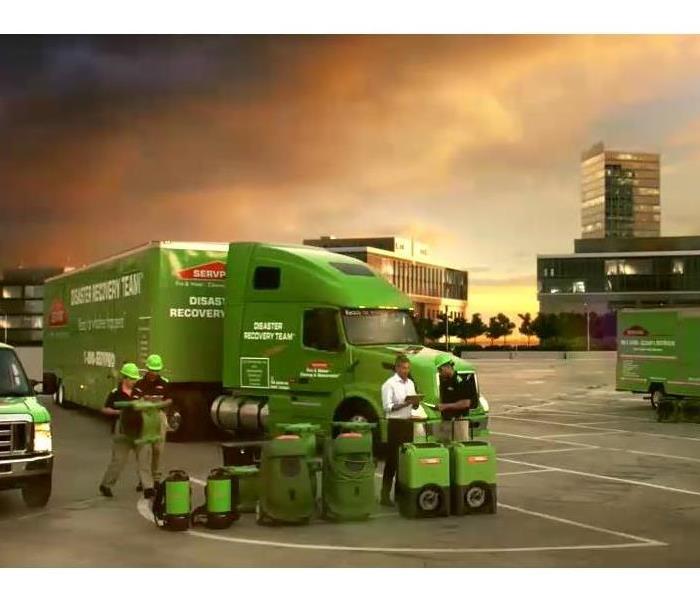 Our highly trained crews are ready to respond 24/7 to storm or flood damage in Calgary and surrounding areas.
Our highly trained crews are ready to respond 24/7 to storm or flood damage in Calgary and surrounding areas.
SERVPRO of Calgary South specializes in storm and flood damage restoration. Our crews are highly trained and we use specialized equipment to restore your property to its pre-storm condition.
Faster Response
Since we are locally owned and operated, we are able to respond quicker with the right resources, which is extremely important. A fast response lessens the damage, limits further damage, and reduces the restoration cost.
Resources to Handle Floods and Storms
When storms hit Calgary, we can scale our resources to handle a large storm or flooding disaster. We can access equipment and personnel from a network of 1,700 Franchises across North America and elite Disaster Recovery Teams that are strategically located throughout the Country.
Have Storm or Flood Damage? Call Us Today 403-255-0202.
Tips for Heavy Rainfall in Calgary
6/23/2019 (Permalink)
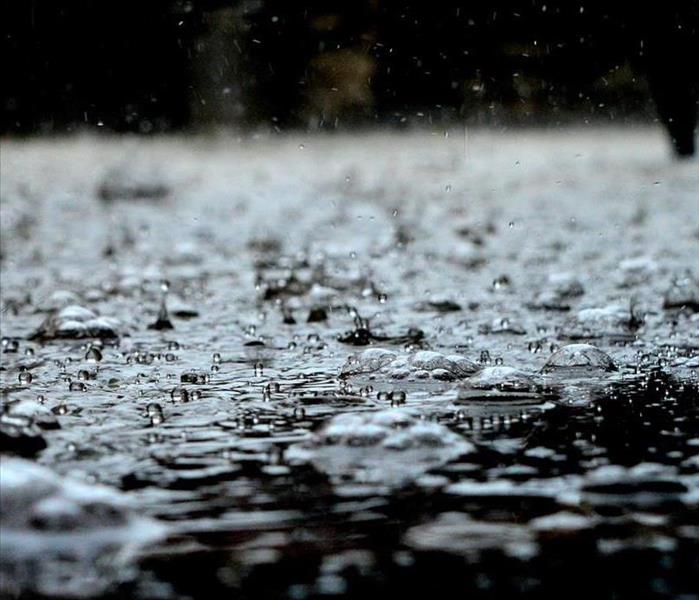 Here are a few tips to handle the increasing frequency of heavy rain storms in Calgary
Here are a few tips to handle the increasing frequency of heavy rain storms in Calgary
The number of severe storms and natural disasters in Canada has been increasing at a dramatic rate over the past few years. Heavy rainfall can cause damage to your property, here are a few tips to get you through the season with hopefully minimal damage.
Home and Business Tips
- Look into purchasing flood insurance. Call your insurance agent make sure flood insurance is right for you.
- Install rain gutters and other drainage systems. Clean out rain gutters frequently, proper water flow will direct water away from your property.
- Fix any leaks ASAP, a small leak can quickly turn into something greater.
- Extra roof protection. You can spend a bit more to install a rubber roof underlay, a waterproof barrier that goes under the shingles and protects the roof from water intrusion. This will also help with insulation in the wintertime.
Rainy Driving Tips
- Don’t use cruise control. This feature works great in dry conditions, but when used in wet conditions, the chance of losing control of the vehicle can increase, as you will have less control over the vehicle.
- Slow down and leave room in front of you. Slowing down during wet weather driving can be critical to reducing a car’s chance of hydroplaning, when the tires rise up on a film of water.
- Posted speed limits are the recommended speed during ideal conditions. Do not feel pressured to drive at the posted limit during a rainstorm, but do not drive too slowly either. As other drivers may have to make dangerous maneuvers to avoid you.
Be Thunderstorm Ready: What to do Before, During, and After Thunderstorms
5/6/2019 (Permalink)
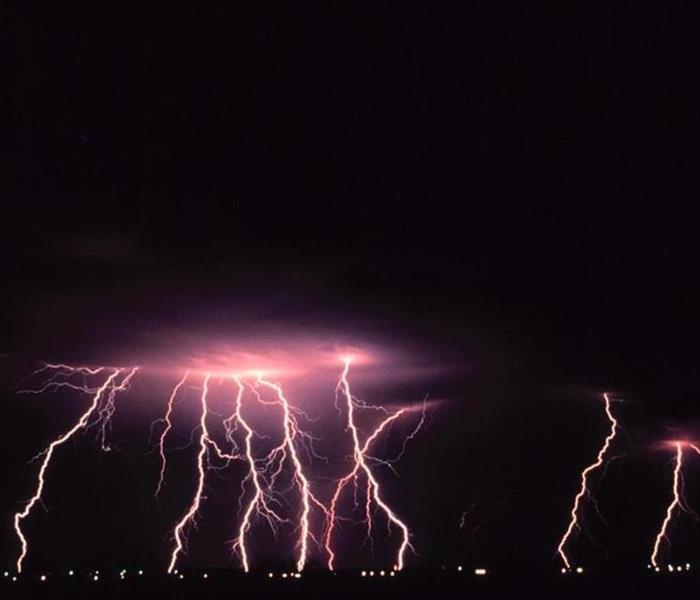 Calgary Thunder Storm
Calgary Thunder Storm
All storms are dangerous and thunderstorms are no exception. Every thunderstorm produces lightning and other hazardous weather conditions, which can include tornadoes, strong winds, hail and flash flooding.
In Western Canada we tend to get a mix of heavy rain and dry thunderstorms, those storms do not produce rain that reaches the ground. As the raindrops fall they are evaporated, with that said the storms lightning can still reach the ground and can start wildfires. Below are great tips from READY to help prepare you for what to do before, during and after a thunderstorm.
What to do before a thunderstorm
To prepare for a thunderstorm, you should do the following:
- To begin preparing, you should build an emergency kit and make a family communications plan.
- Remove dead or rotting trees and branches that could fall and cause injury or damage during a severe thunderstorm.
- Postpone outdoor activities.
- Secure outdoor objects that could blow away or cause damage.
- Get inside a home, building, or hard top automobile (not a convertible). Although you may be injured if lightning strikes your car, you are much safer inside a vehicle than outside.
- Remember, rubber-soled shoes and rubber tires provide NO protection from lightning. However, the steel frame of a hard-topped vehicle provides increased protection if you are not touching metal.
- Shutter windows and secure outside doors. If shutters are not available, close window blinds, shades or curtains.
- Unplug any electronic equipment well before the storm arrives.
Lightning Risk Reduction When Outdoors
If you are:
In a forest: Seek shelter in a low area under a thick growth of small trees.
In an open area: Go to a low place such as a ravine or valley. Be alert for flash floods.
On open water: Get to land and find shelter immediately.
Facts about Thunderstorms
- They may occur singly, in clusters or in lines.
- Some of the most severe occur when a single thunderstorm affects one location for an extended time.
- Thunderstorms typically produce heavy rain for a brief period, anywhere from 30 minutes to an hour.
- Warm, humid conditions are highly favourable for thunderstorm development.
- About 10 percent of thunderstorms are classified as severe – one that produces hail at least an inch or larger in diameter, has strong winds or produces a tornado.
Facts about Lightning
- Lightning’s unpredictability increases the risk to individuals and property.
- Lightning often strikes outside of heavy rain and may occur as far as 15 km away from any rainfall.
- “Heat lightning” is actually lightning from a thunderstorm too far away from thunder to be heard. However, the storm may be moving in your direction.
- Most lightning deaths and injuries occur when people are caught outdoors in the summer months during the afternoon and evening.
- Your chances of being struck by lightning are estimated to be 1 in 600,000 but could be reduced even further by following safety precautions.
- Lightning strike victims carry no electrical charge and should be attended to immediately.
What to do during a thunderstorm
If thunderstorm and lightning are occurring in your area, you should:
- Use a battery-operated weather radio for updates from local officials.
- Avoid contact with corded phones and devices including those plugged into electric for recharging. Cordless and wireless phones not connected to wall outlets are OK to use.
- Avoid contact with electrical equipment or cords. Unplug appliances and other electrical items such as computers and turn off air conditioners. Power surges from lightning can cause serious damage.
- Avoid contact with plumbing. Do not wash your hands, do not take a shower, do not wash dishes, and do not do laundry. Plumbing and bathroom fixtures can conduct electricity.
- Stay away from windows and doors, and stay off porches, patios and deks.
- Do not lie on concrete floors and do not lean against concrete walls.
- Avoid natural lightning rods such as a tall, isolated tree in an open area.
- Avoid hilltops, open fields, the beach or a boat on the water.
- Take shelter in a sturdy building. Avoid isolated sheds or other small structures in open areas.
- Avoid contact with anything metal—tractors, farm equipment, motorcycles, golf carts, golf clubs, and bicycles.
- If you are driving, try to safely exit the roadway and park. Stay in the vehicle and turn on the emergency flashers until the heavy rain ends. Avoid touching metal or other surfaces that conduct electricity in and outside the vehicle.
What to do after a thunderstorm
If lightning strikes you or someone you know, call 9-1-1 for medical assistance as soon as possible. The following are things you should check when you attempt to give aid to a victim of lightning:
- Breathing or Heartbeat - if the heart or breath has stopped, administer CPR.
- Pulse - if the victim has a pulse and is breathing, look for other possible injuries. Check for burns where the lightning entered and left the body. Also be alert for nervous system damage, broken bones and loss of hearing and eyesight.
After the storm passes remember to:
- Never drive through a flooded roadway. Turn around or wait till water subsides.
- Stay away from storm-damaged areas to keep from putting yourself at risk from the effects of severe thunderstorms.
- Continue to listen to local radio and television stations for updated information or instructions, as access to roads or some parts of the community may be blocked.
- Help people who may require special assistance, such as infants, children and the elderly or those with access or functional needs.
- Stay away from downed power lines and report them immediately.
- Watch your animals closely. Keep them under your direct control.
Calgary and Alberta Flood Prevention
2/28/2019 (Permalink)
 Calgary, Alberta Flood prevention and reaction tips
Calgary, Alberta Flood prevention and reaction tips
Floods happen and they can be extremely devastating to properties and disruptive to our everyday lives. Some are calling Alberta the “natural disaster capital” of Canada after a study commissioned by the Insurance Bureau of Canada shows that an increase in extreme weather is hitting Alberta insurance companies pretty hard. Not only does this cause a financial and personal burden for families and businesses owners, the livelihood of communities across the province are being affected. Wildfires, floods, hail storms, and other extreme weather conditions continue to sweep in each year causing millions of dollars in damage. Question is, what can we expect moving forward and how can Albertans protect themselves?
Don Forgeron, the President and CEO of Insurance Bureau of Canada made a speech in November of 2015 discussing the dire need of a National Flood program. Forgeron says “A national flood program, we believe, would offer a much more comprehensive and disciplined way to compensate people as a result of damage from flood.” This program would include new sewer and storm-water infrastructures around flood prone areas, create a “culture of flood preparedness” providing a comprehensive list of steps on how to flood proof their properties.
Will this National Flood Program move forward? We will have to wait and see. In the meantime, homeowners/property owners should take all the steps necessary to flood proof their homes and properties. Some of which include the following.
- Know if your home is built on Fill, clay, sand, or gravely soil as these materials can help prevent flood damage.
- Do you have an option to build elevated structures (columns or bearing walls) around your properties or more specifically the areas prone to flood damage?
- Observe the kind of materials of the structure of your house and make sure that it is properly sealed.
- Purchasing sandbags in the event of a flood are a great emergency tool to help prevent water from flowing into your home or property.
While all of these measures will help prevent severe damage in the event of a flood, home owners/property owners should still be educated about their insurance policies should they live in an area prone to flooding. Contact you Insurance company and educate yourself what kind of coverage you have and what is available.
As for a new national flood program, we will have to wait on new developments. Brenda Neufled reports that “IBC is proposing a framework for the financial management of flood risk, with shared responsibilities for the insurance industry, all tiers of government and consumers.” This could mean good news for Albertans living in flood plan areas. Keep an ear out as new aid might be available in the near future for those affected by floods or potential flood victims.
Albertans can also purchase overland flood insurance. This covers any water that flows on top of the land and enters the property from windows, doors, garages, and other openings. Contact your insurance provider today to see if overland flood insurance is right for your property.
When Storms or Floods hit Calgary, SERVPRO is ready!
8/12/2018 (Permalink)
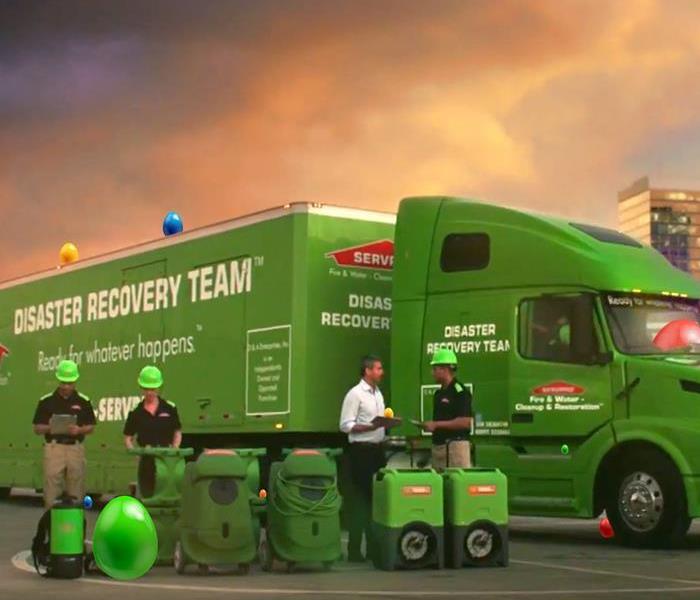 Our highly trained crews are ready to respond 24/7 to storm or flood damage in Calgary.
Our highly trained crews are ready to respond 24/7 to storm or flood damage in Calgary.
SERVPRO of Calgary South specializes in storm and flood damage restoration. Our crews are highly trained and we use specialized equipment to restore your property to its pre-storm condition.
Faster Response
Since we are locally owned and operated, we are able to respond quicker with the right resources, which is extremely important. A fast response lessens the damage, limits further damage, and reduces the restoration cost.
Resources to Handle Floods and Storms
When storms hit Calgary, we can scale our resources to handle a large storm or flooding disaster. We can access equipment and personnel from a network of 1,650 Franchises across North America and elite Disaster Recovery Teams that are strategically located throughout the Country.
Have Storm or Flood Damage? Call Us Today 403-255-0202.




 24/7 Emergency Service
24/7 Emergency Service






